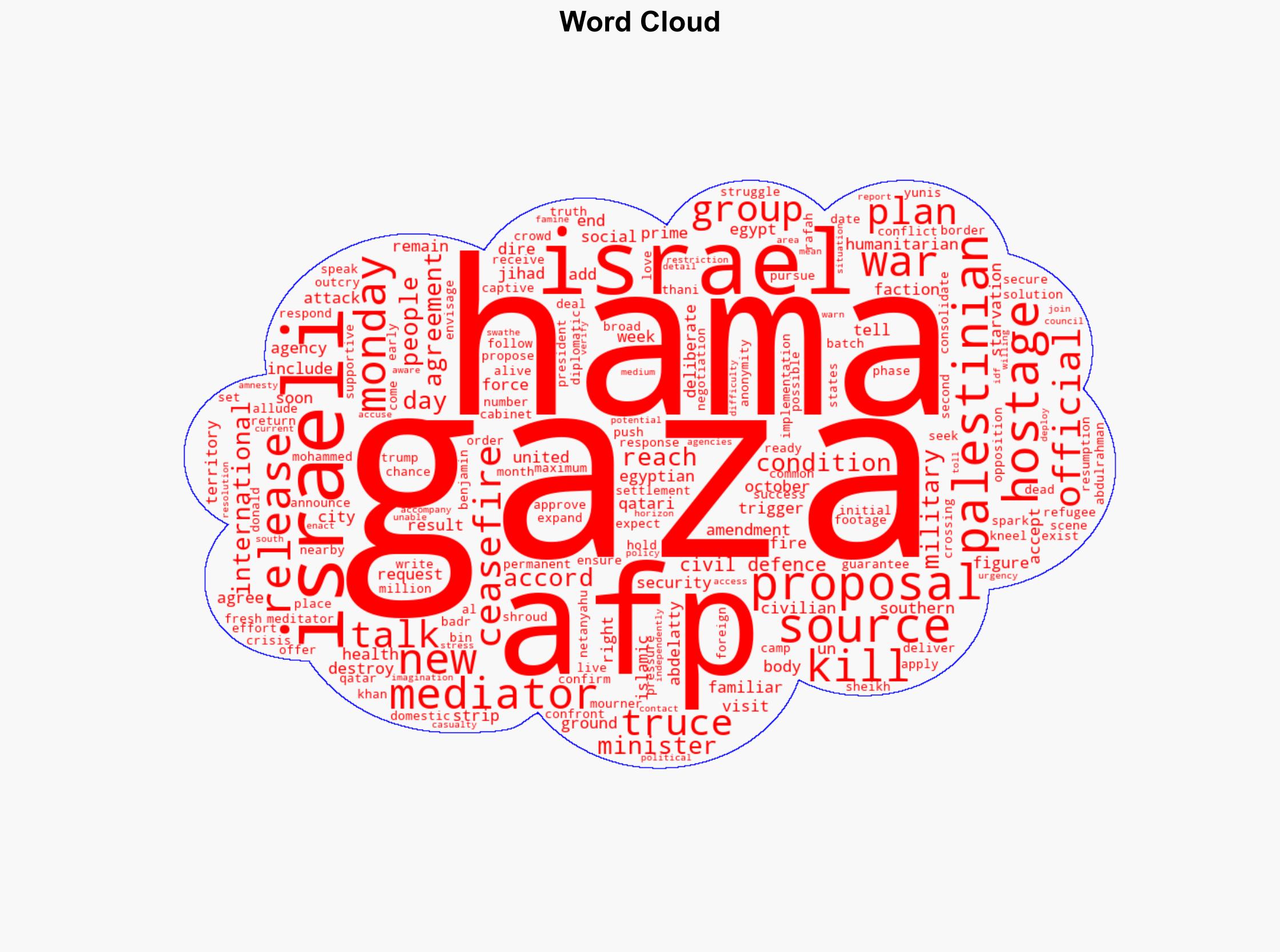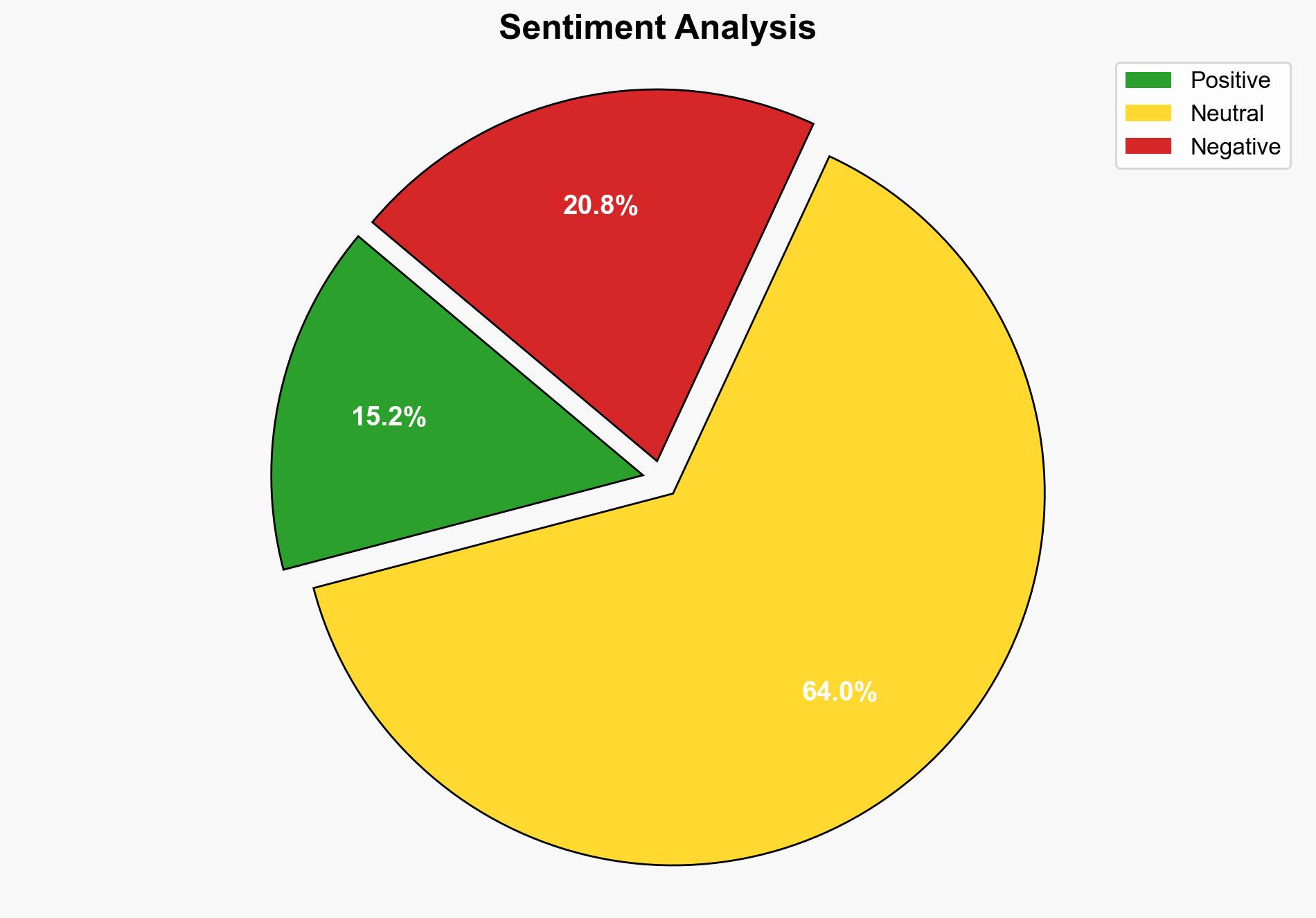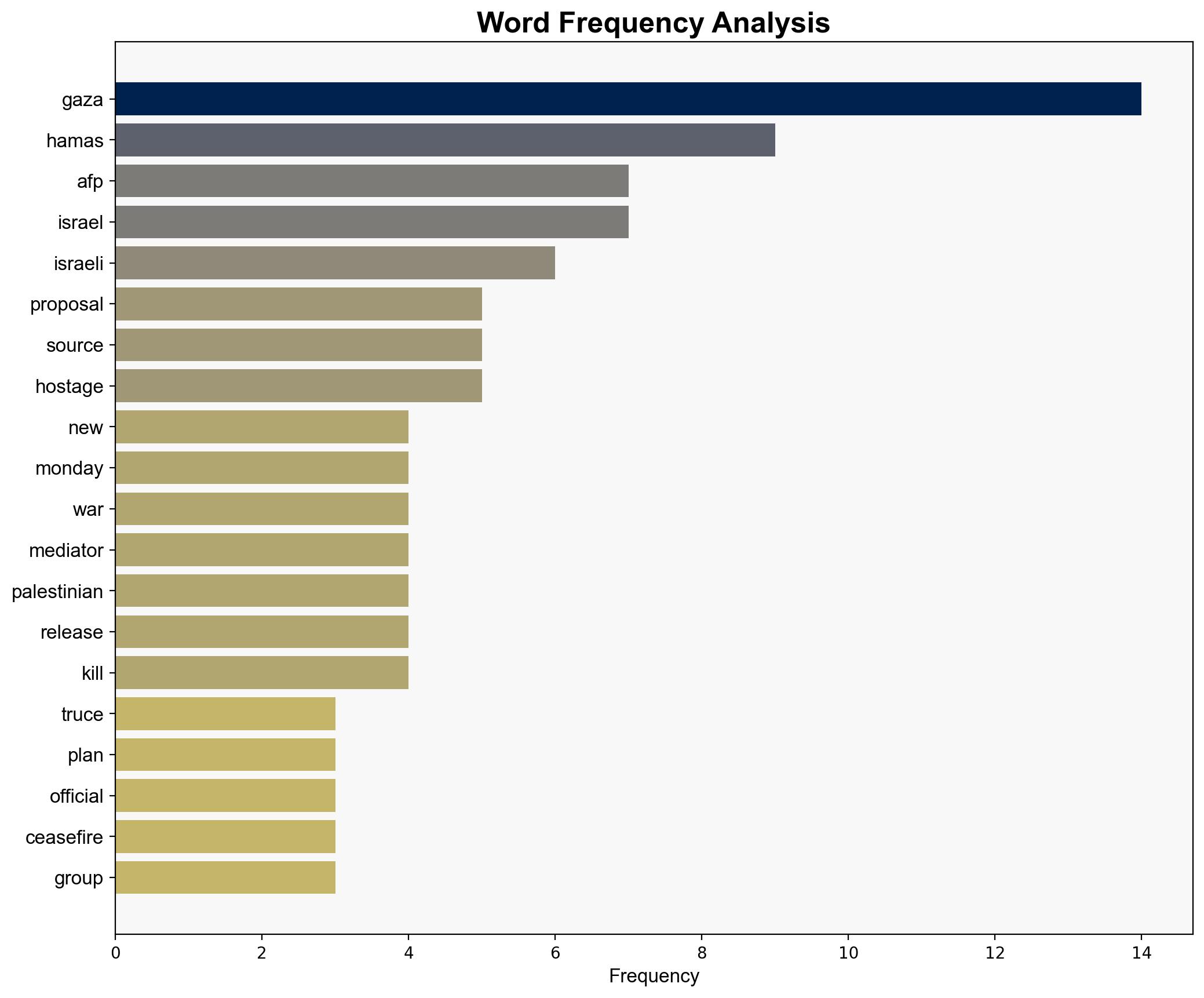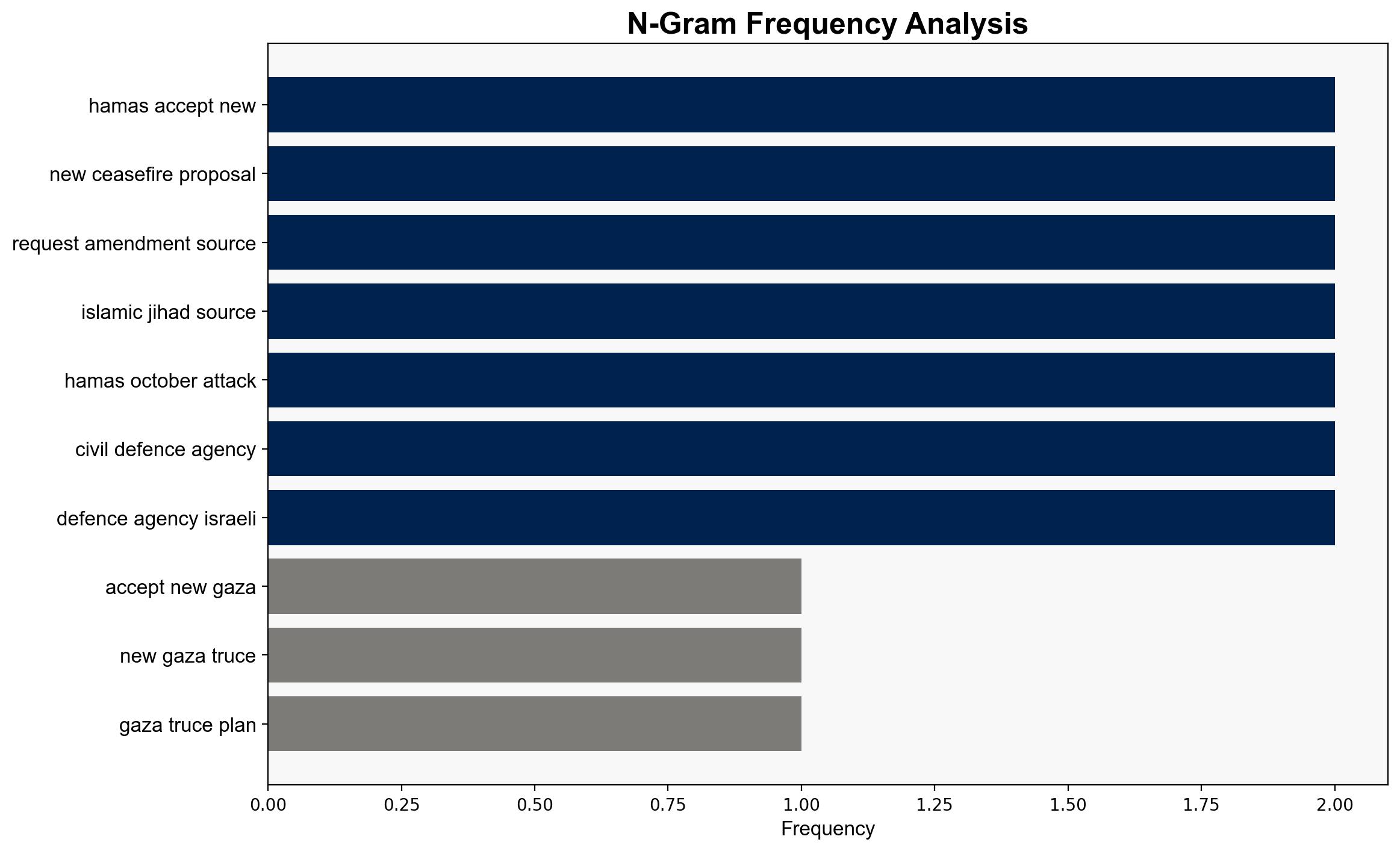Hamas Accepts New Gaza Truce Plan Hamas Official – International Business Times
Published on: 2025-08-18
Intelligence Report: Hamas Accepts New Gaza Truce Plan Hamas Official – International Business Times
1. BLUF (Bottom Line Up Front)
The most supported hypothesis is that Hamas is genuinely engaging in negotiations to reach a ceasefire agreement, potentially to alleviate the humanitarian crisis in Gaza and to secure strategic gains. Confidence level: Moderate. Recommended action: Monitor the negotiation process closely and prepare contingency plans for both successful and failed negotiations.
2. Competing Hypotheses
1. **Hamas is genuinely seeking a ceasefire to alleviate the humanitarian crisis and secure strategic gains.** This hypothesis suggests that Hamas is motivated by the dire humanitarian conditions in Gaza and the potential for political and strategic benefits from a ceasefire.
2. **Hamas is using the ceasefire negotiations as a tactical delay to regroup and strengthen its position.** This hypothesis posits that Hamas is not sincerely interested in a long-term ceasefire but is instead using the negotiations to buy time and prepare for further conflict.
Structured Analytic Technique: Using Analysis of Competing Hypotheses (ACH), the first hypothesis is better supported by the current intelligence, which indicates active engagement in negotiations and external pressure from mediators like Egypt and Qatar.
3. Key Assumptions and Red Flags
– **Assumptions**: It is assumed that Hamas has the authority to negotiate on behalf of all factions and that external mediators can effectively influence the process.
– **Red Flags**: The anonymity of sources and the lack of independent verification of claims raise concerns about the reliability of the information. Additionally, the potential for internal dissent within Hamas or among other factions could undermine negotiations.
4. Implications and Strategic Risks
– **Implications**: A successful ceasefire could stabilize the region temporarily and provide humanitarian relief. However, failure to reach an agreement could escalate tensions and lead to further conflict.
– **Strategic Risks**: The risk of miscommunication or miscalculation during negotiations could lead to unintended escalation. Additionally, if the ceasefire is perceived as a victory for Hamas, it could embolden other militant groups.
5. Recommendations and Outlook
- Maintain diplomatic engagement with key mediators to support the negotiation process.
- Prepare for potential escalation by enhancing regional security measures and humanitarian aid readiness.
- Scenario Projections:
- Best Case: A durable ceasefire is achieved, leading to improved humanitarian conditions and a framework for long-term peace.
- Worst Case: Negotiations collapse, resulting in renewed hostilities and a worsening humanitarian crisis.
- Most Likely: A temporary ceasefire is reached, but long-term stability remains elusive.
6. Key Individuals and Entities
– Sheikh Mohammed bin Abdulrahman Al Thani
– Badr Abdelatty
– Benjamin Netanyahu
– Donald Trump
7. Thematic Tags
national security threats, counter-terrorism, regional focus, humanitarian crisis





